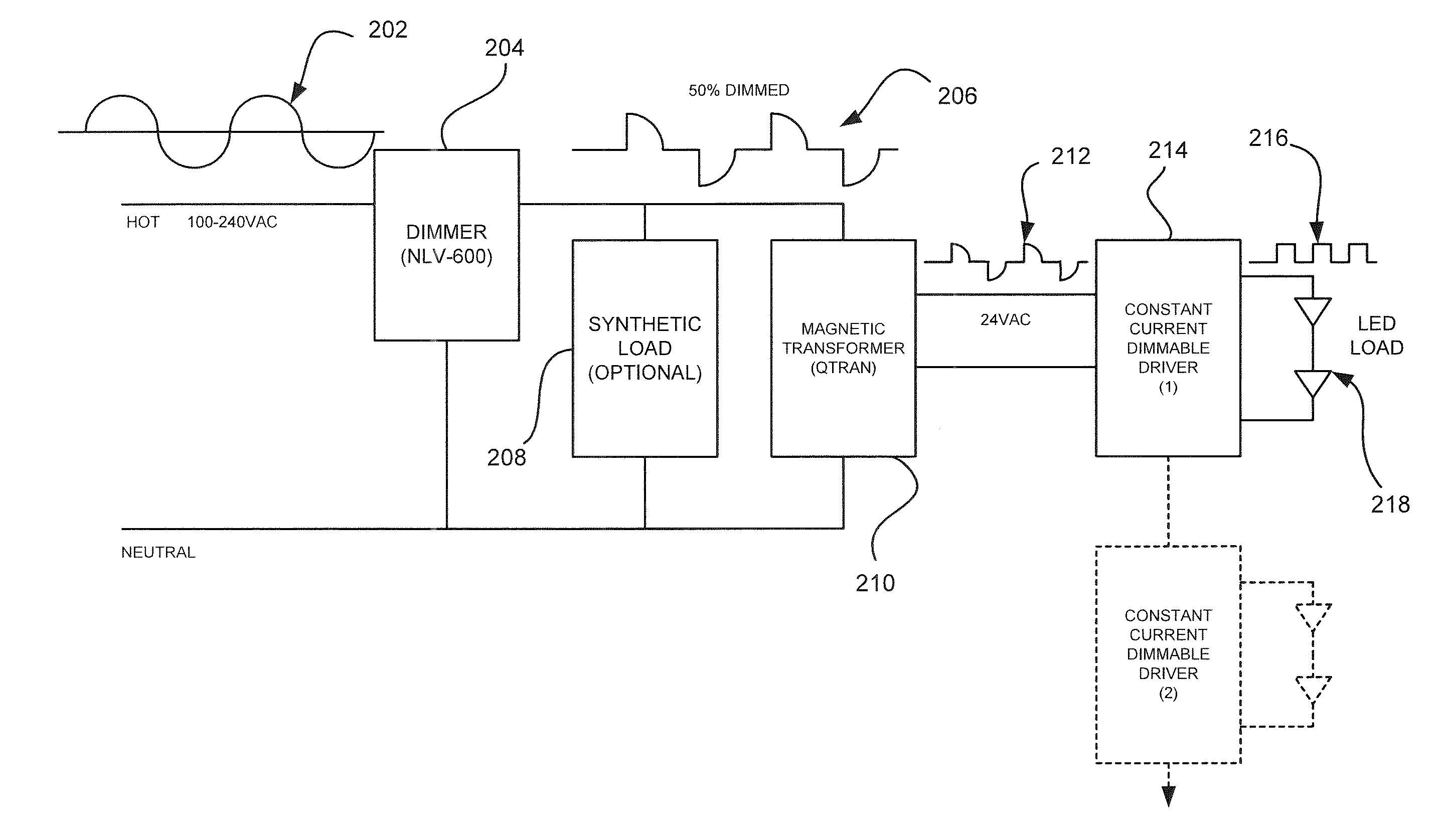Line voltage dimmable constant current LED driver
a constant current, led driver technology, applied in the direction of instruments, light sources, electrical equipment, etc., can solve the problems of repeated replacement costs, short life, increased energy costs, etc., to reduce power factor issues, reduce led on time, and avoid flicker
- Summary
- Abstract
- Description
- Claims
- Application Information
AI Technical Summary
Benefits of technology
Problems solved by technology
Method used
Image
Examples
Embodiment Construction
[0035]Preferred embodiments of the present disclosure will be described hereinbelow with reference to the accompanying drawings. In the following description, well-known functions or constructions are not described in detail to avoid obscuring the invention in unnecessary detail.
[0036]Referring to FIG. 1, an embodiment of a dimmable LED driver 100 of the present disclosure is shown. FIG. 2 provides a functional block diagram of the operation of the driver circuit 100 shown in FIG. 1.
[0037]Generally, the driver circuit 100 includes an input power conditioning section 102, a bridge rectifier 104, a voltage regulator 106, a programmable microcontroller 108 and a constant current switching regulator 110. A temperature sensor 112 is further provided for sensing the temperature of the driver circuit. The driver circuit 100 is coupled to and will drive LED load 114, i.e., at least one LED.
[0038]An input power waveform is illustrated in FIG. 3. The input power conditioning section 102 of th...
PUM
 Login to View More
Login to View More Abstract
Description
Claims
Application Information
 Login to View More
Login to View More - R&D
- Intellectual Property
- Life Sciences
- Materials
- Tech Scout
- Unparalleled Data Quality
- Higher Quality Content
- 60% Fewer Hallucinations
Browse by: Latest US Patents, China's latest patents, Technical Efficacy Thesaurus, Application Domain, Technology Topic, Popular Technical Reports.
© 2025 PatSnap. All rights reserved.Legal|Privacy policy|Modern Slavery Act Transparency Statement|Sitemap|About US| Contact US: help@patsnap.com



